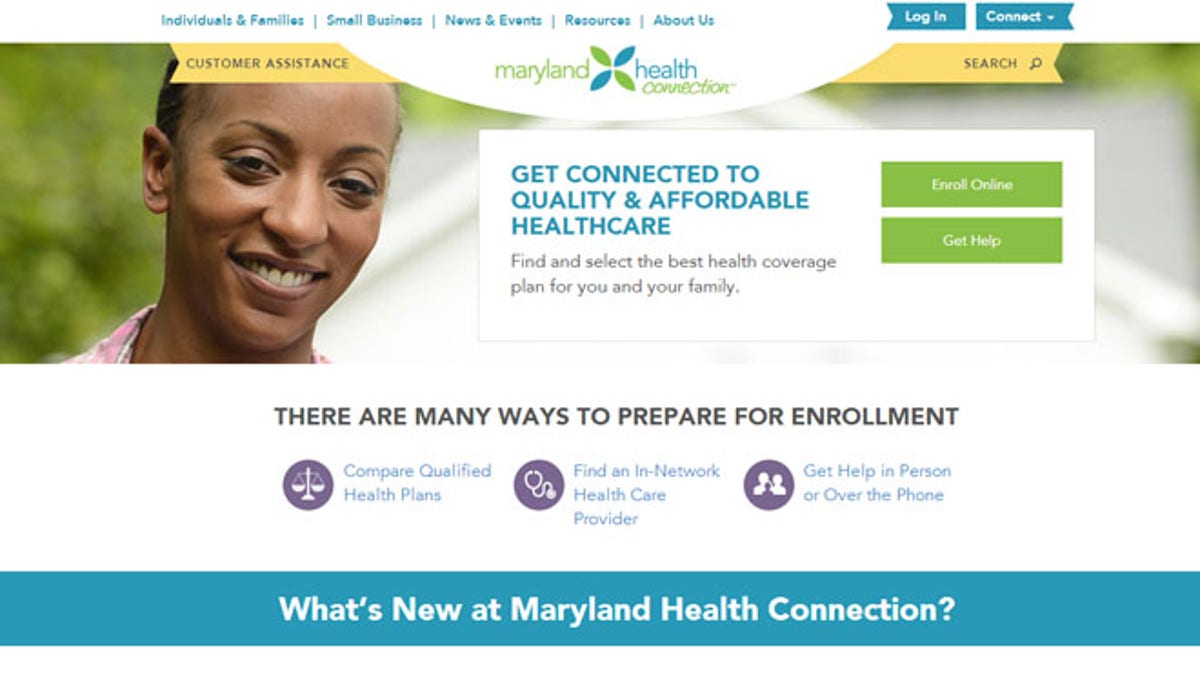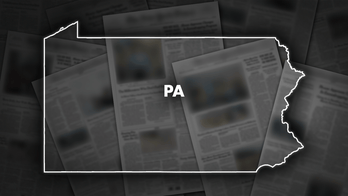
(MarylandHealthConnection.Gov)
HANOVER, Md. – The board overseeing Maryland's ObamaCare exchange voted Tuesday to replace technology in the state's glitch-ridden system with technology used in in Connecticut's exchange instead of fixing its current system or partnering with the federal government.
The board of directors of the Maryland Health Benefit Exchange decided to adopt a technology developed by Deloitte Consulting that has proved successful in Connecticut.
Dr. Joshua Sharfstein, the state's health secretary, will negotiate an emergency $40 million to $50 million contract with the software company to develop a new website, The Baltimore Sun reported. The software will be free for the state to use.
"It's a very effective, simple solution," Sharfstein said after the unanimous vote. "It's been very successful in Connecticut, and we're looking forward to implementing it in Maryland."
Maryland has had one of the worst exchange websites of the 14 states that developed their own: The state's health exchange website crashed shortly after it opened Oct. 1.
Sharfstein said he was optimistic the federal government would approve of the plan and provide a substantial amount of the money.
"If we are able to get approval, we think that the federal government will be paying a good part of the money," Sharfstein said.
The vote comes a day after open enrollment under ObamaCare ended Monday, with federal officials boasting that 7.1 million people had signed up the health care law -- a threshold that once was seen as unattainable.
The decision to shift to Deloitte comes as Maryland tries to build a better exchange website for the next open enrollment period in November. The state will keep its own health insurance exchange, while importing technology from Connecticut to support the website. For example, the Maryland exchange includes the board, state policies, a call center and other consumer assistance networks and staff. All of that will remain in place.
The state expects the transition to take about seven months, which doesn't leave much room for error to have the system working by November.
"We've got a very tight timeframe, though, and we realize that there's risk there, but in the end we thought this was the least risky path," the health secretary said.
Republicans have called for investigations into how the state's exchange was managed and criticized what amounts to the loss of tens of millions of dollars in fixing the flawed system. U.S. Rep. Andy Harris, the only Republican in the state's congressional delegation, called on the inspector general of the U.S. Department of Health and Human Services to investigate, and the inspector general has agreed to conduct a review.
Harris, a physician, said in a statement Tuesday night, "Regrettably, as opposed to joining the federal exchange, going with the Connecticut technology will still cost Marylanders tens of millions of dollars more."
Daniel Levinson, the inspector general for HHS, provided an update on Tuesday about the review. In a letter, Levinson wrote that his office will determine whether Maryland's health department complied with federal requirements related to the development and implementation of the exchange.
That will include a review of whether the state complied with award requirements and used federal funds as intended, as well as an assessment of whether the state procurement process met federal requirements. The review also will analyze spending and determine whether costs were "allowable, reasonable, and allocable according to federal requirements," Levinson wrote in the letter. The review also will make recommendations for financial recovery, if appropriate.
Democratic Gov. Martin O'Malley and Lt. Gov. Anthony Brown have blamed vendors for failing to deliver the product promised to the state, specifically IBM and Curam.
"Our administration has not succeeded at every first try, but we have never given up," O'Malley and Brown said in a joint statement after the board's vote. "We learn from both success and failure. The vendors we hired failed to build us the platform they promised."
Clint Roswell, a spokesman for IBM, criticized the state's leadership, noting that O'Malley has said the state reached enrollment goals, despite the problems.
"In brief, the state's enrollment goal was reached despite its own failures of leadership," Roswell said in a statement. "We will now turn our attention to a successful transition of the project."
O'Malley, speaking at a news conference in Annapolis after he heard about IBM's statement, responded, "We take responsibility for fixing that, and we'll see IBM in court."
Senate President Thomas V. Mike Miller questioned why government officials oversaw the creation and launch of the website rather than someone from the private sector with information technology experience, The Sun reported.
"The rollout of this leaves a lot to be desired," Miller told the paper. "You can blame it on the contractor, blame it on the subcontractor, but the buck stops with state government. And it hasn't been done properly. State money has not been used wisely, and we need to move forward as expeditiously as possible in getting this right."
Sharfstein provided updated enrollment numbers on Tuesday. He said the state enrolled 60,003 people into private health plans. The state initially hoped to have 150,000 enrolled in private plans. O'Malley has tried to offset the disappointing private plan enrollments by highlighting a higher numbers of Medicaid enrollments through the federal Affordable Care Act. Sharfstein said Tuesday that 232,025 have been enrolled in Medicaid. The state's goal of total enrollments was 260,000.
The Associated Press contributed to this report.




